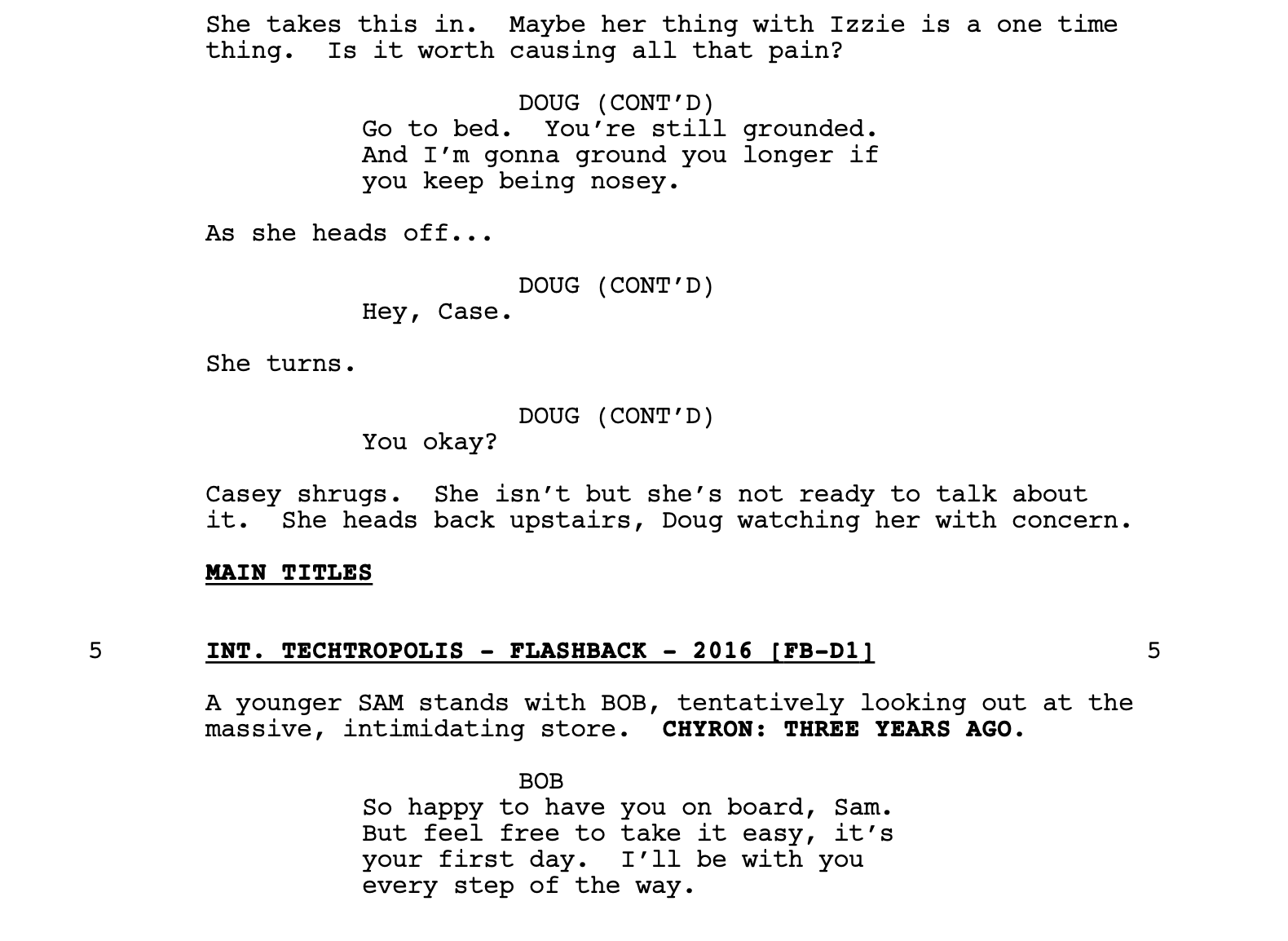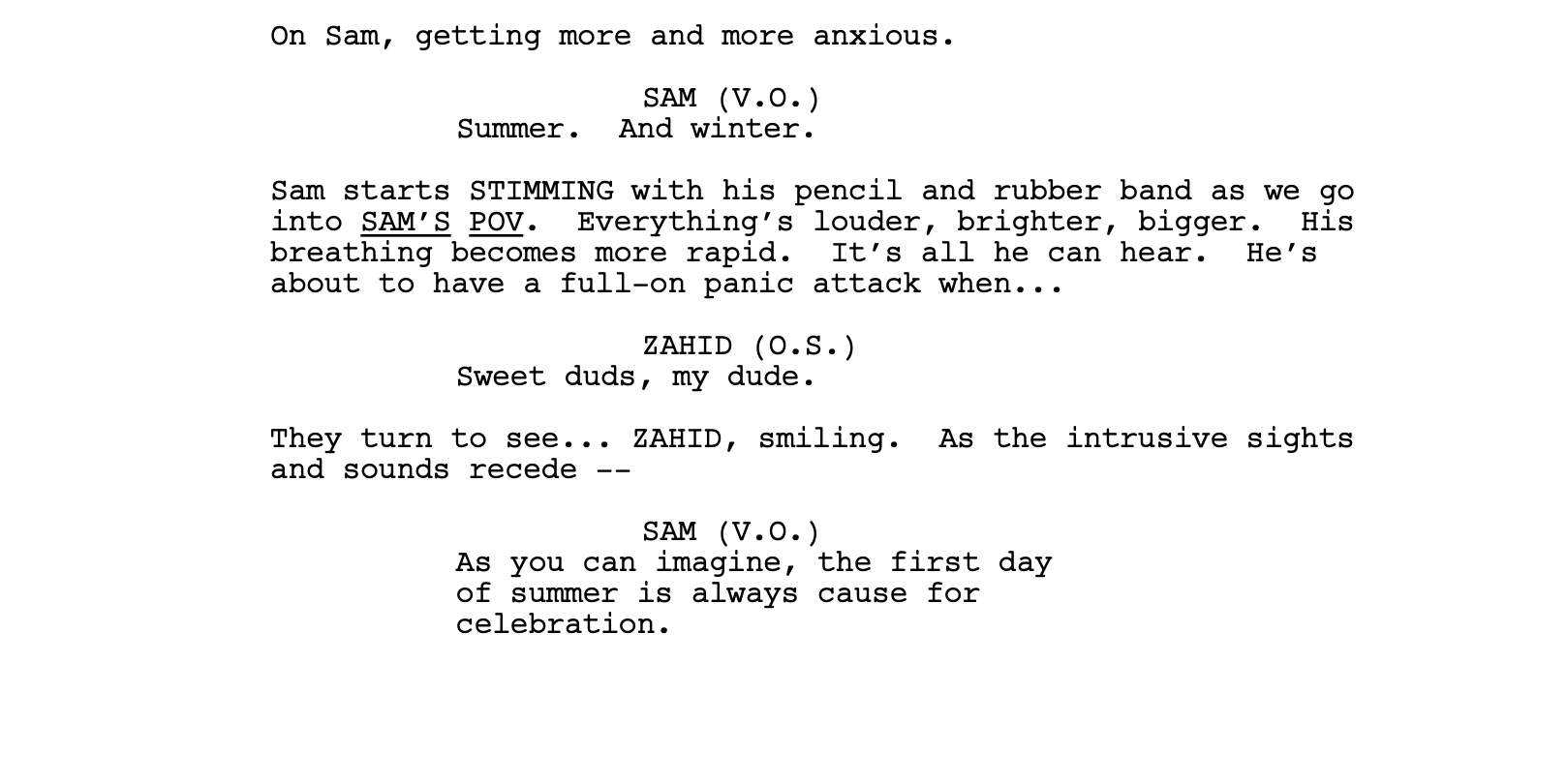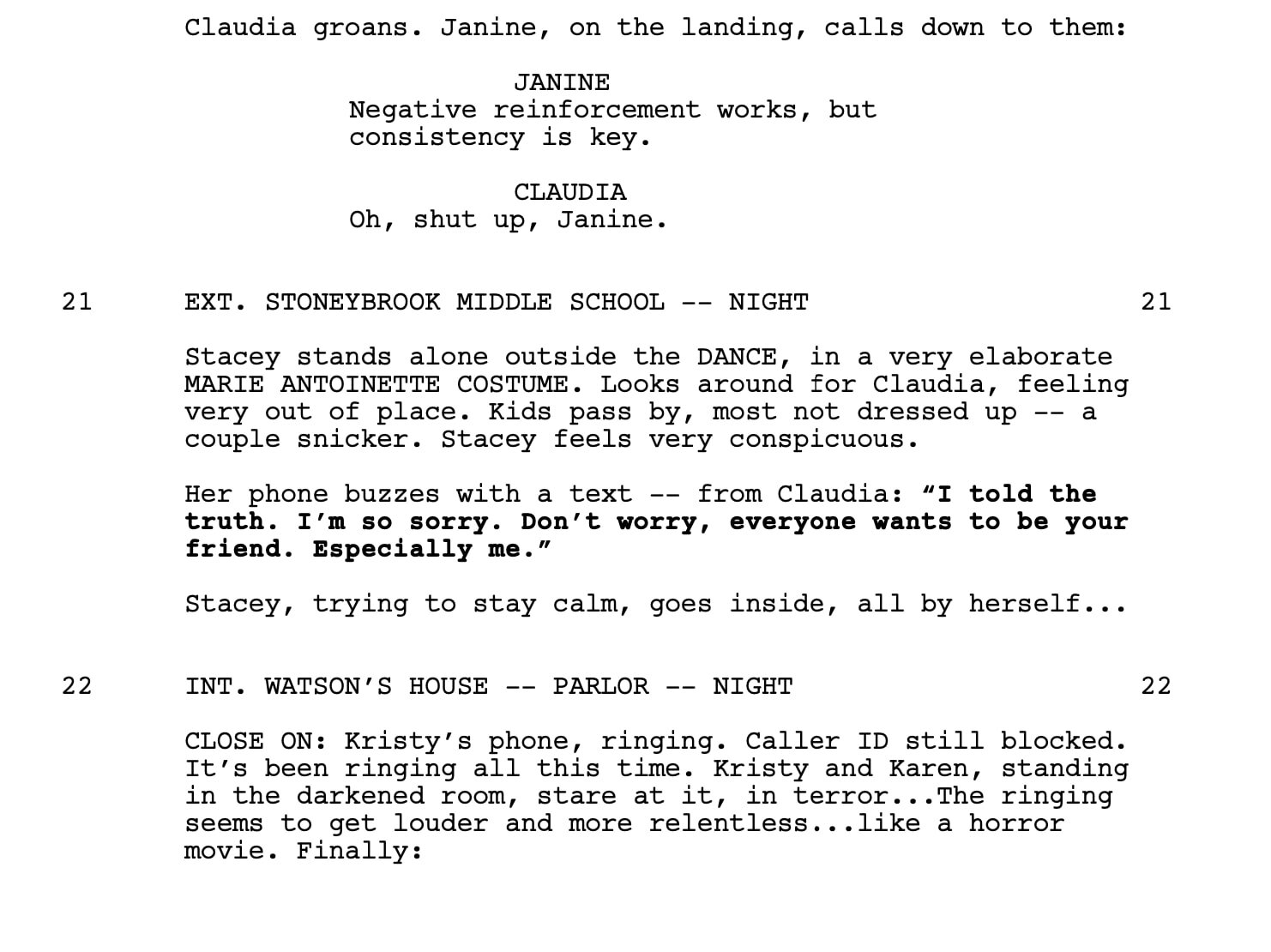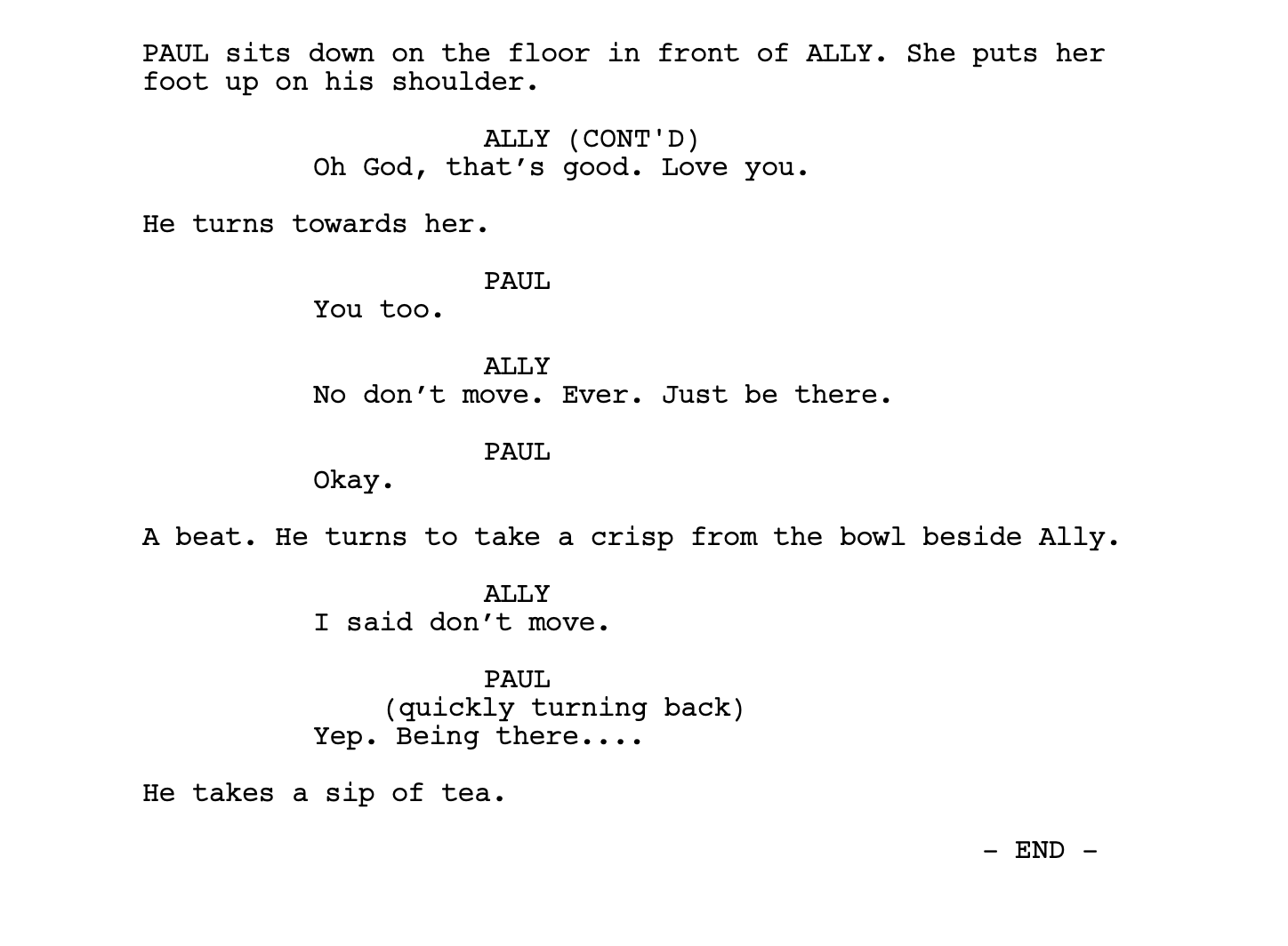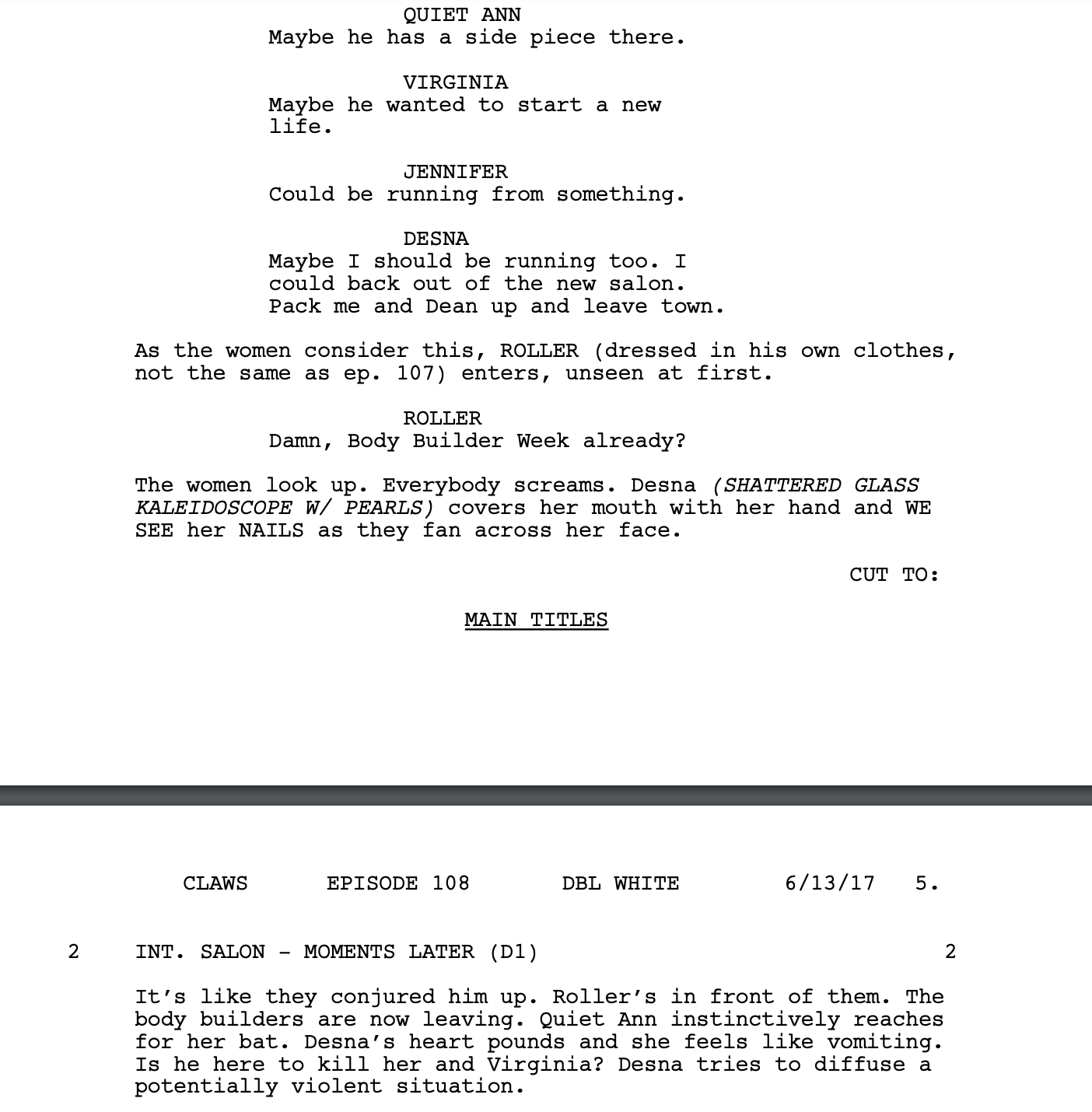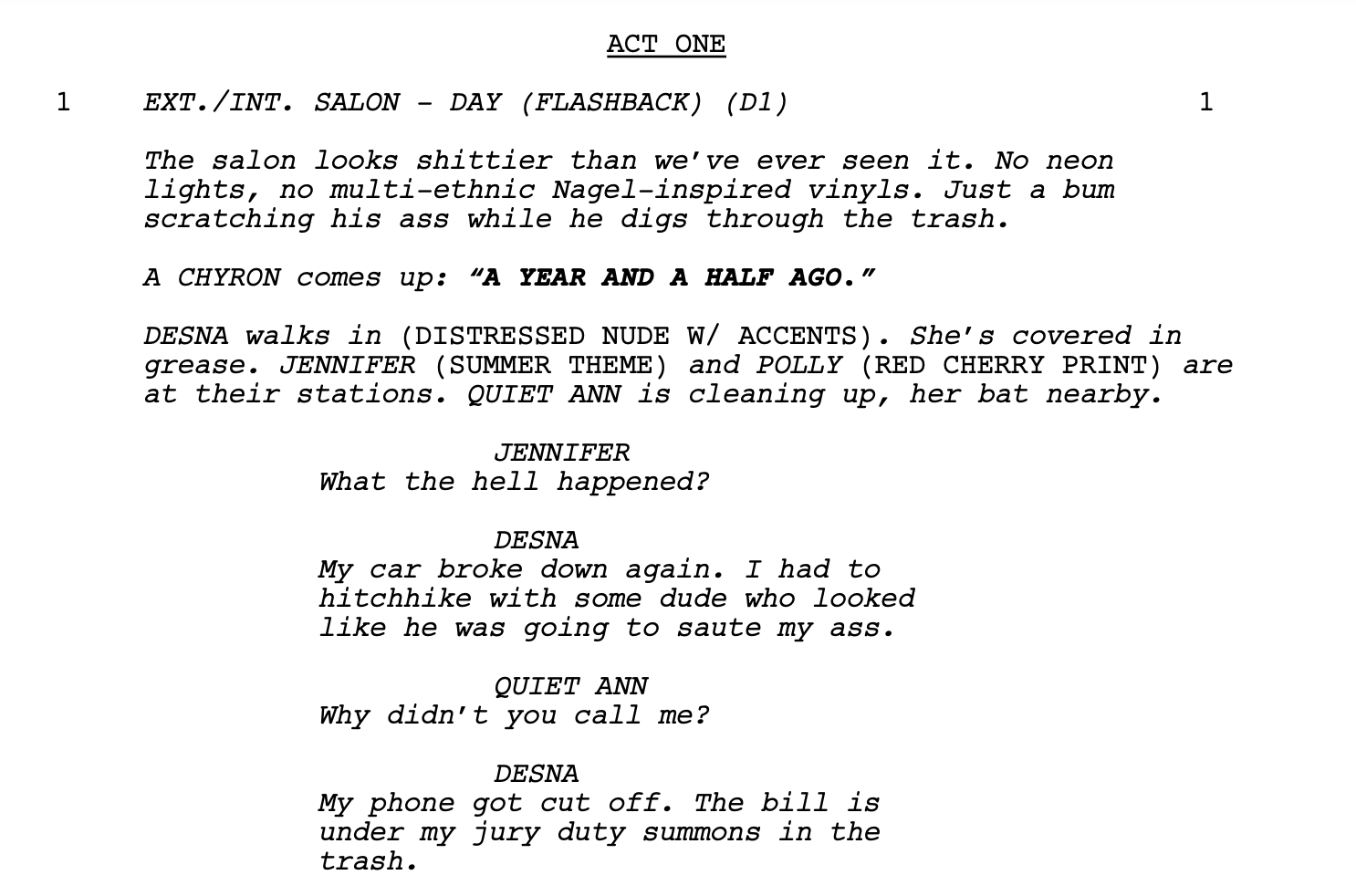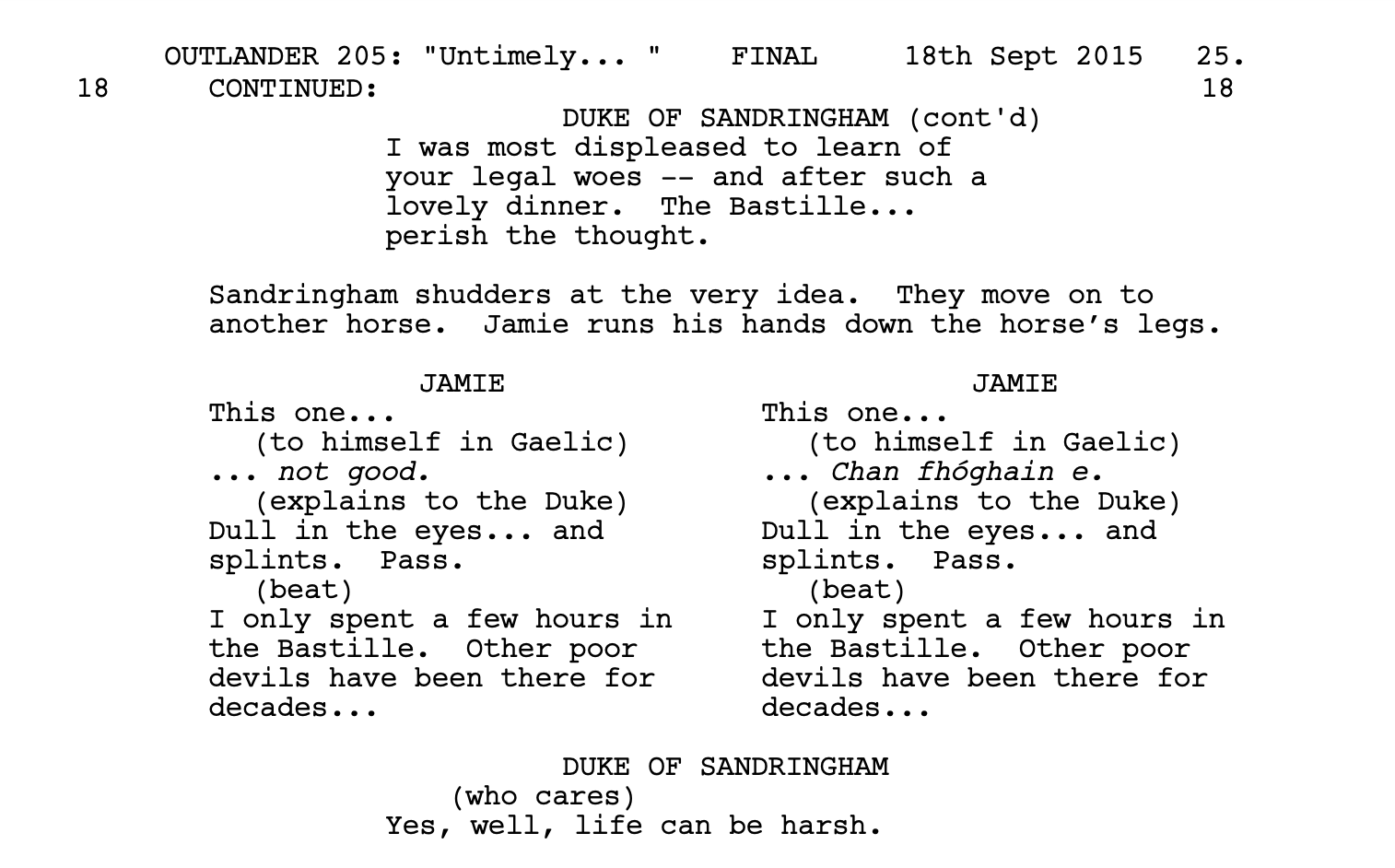FORMATTING YOUR SPEC SCRIPT WHILE SOCIAL DISTANCING: A PRIMER, PART 17
Well here we are. Can you believe it!?
With this post, we’ve covered 101 shows on the Formatting Your Spec Script While Social Distancing series!! We hope you’ve gotten as much out of reading these primers as we have from preparing them. As always, we are not able to send out scripts in full as we are not the copyright holders, but we hope this and all of the primers jump-start your research and writing. If you have further, more specific questions about the shows covered in this (or any other) formatting post, please e-mail us at library@wgfoundation.org and we can help clarify or provide more info.
We’ll be back when we have more shows to cover. Infinite thanks to the writers who’ve donated their scripts to the library for study. These posts would not be possible without your generosity.
Happy spec-ing!! - The WGF Library Team
ATYPICAL (Netflix)
Average page count: 30 or so
Average scene count: 30-40
Broken into acts? No
The library has an early draft of the pilot and one other episode (Road Rage Paige 3-8), so keep this in mind when looking at this information.
Scripts aren’t broken into acts. In the script for “Road Rage Page" there is a main title cue on page 5. Just MAIN TITLES on the left-hand side, centered, bolded, underlined.
Also see the below example for how the show formats text on screen / CHYRON.
Episode concludes with END OF EPISODE, centered, bolded and underlined.
Scene headings are in bold and underlined.
Sometimes on Atypical, we go into the main character Sam’s POV and everything is heightened and seen entirely from his perspective. Here is an example of what that looks like and how it’s formatted.
THE BABY-SITTER’S CLUB (Netflix)
Average page count: 27-29 (more often 29)
Average scene count: 22-28
Broken into acts? No
Other things to consider:
Each episode is told from a different character’s perspective. The narrating character’s voice-over is presented in italics.
Text on screen is delineated in bold.
Description is utilitarian and functional. It’s a show about babysitters, but the prose doesn’t talk down and isn’t “cutesy.”
Episodes end with “END OF EPISODE” bolded and underlined on the left-hand side of the page.
BREEDERS (FX)
Average page count: 27-34 (most are 32 or 33)
Average scene count: 24-38
Broken into acts? No
Other things to consider:
The prose is sparse and simple, but does contain some of the humor found in the dialogue.
Text on screen or when a character sends a text message is in italics in the description, e.g. “MICHAEL gets a text from Paul: Flat viewing, don’t forget.”
Some scripts CAPITALIZE characters names throughout, but this is not consistent.
Flashbacks are used throughout episodes to add humor, explore characters and give us context for present day. Flashbacks are formatted with a quick “FLASH TO:” on the right-hand side of the page, then when the flashback is over “BACK TO:” also on the right-hand side of the page.
Scripts are not broken into acts, but writers denote the end of the script with “— END —“ on the right-hand side of the page.
CLAWS (TNT)
Average page count: 50-55
Average scene count: 48-50, but can vary
Broken into acts? Yes, 6
Other things to consider:
Scripts are broken into six acts. Act headings / outs are formatted: ACT ONE, centered and underlined, then END OF ACT ONE.
Acts are roughly 8-10 pages each. Acts five and six tend to be a bit shorter 5-8 pages.
Most scripts feature a main title cue. It usually occurs around page 3 to 5. It’s formatted “CUT TO:” or “SMASH CUT TO:” on the right hand-side…. MAIN TITLES, centered and underlined.
Flashbacks are written in italics.
Description is fun and punchy. Most of the time, when any of the manicurists appear in a scene, the description explains the color and style of their nails. They do this in a parenthetical with all CAPITAL letters.
CHYRONs and text on screen are usually written in bold.
THE FLIGHT ATTENDANT (HBO Max)
Average page count: 47-56 more or less
Average scene count: 45-80 meaning there’s a big range
Broken into acts? Yes, 5 and a teaser
Other things to consider:
The teaser is usually 3 to 6 pages…. And ends with a main title cue: THE FLIGHT ATTENDANT, centered, bolded and underlined.
The lengths of the subsequent five acts vary widely. Generally acts one through four can range from 5 to 15 pages. The fifth and final act is often shorter — 2 to 8 pages.
Flashbacks are simply noted in the scene heading.
Any instance of the story where we’re in Cassie’s head is written in bold text.
Episodes end with TO BE CONTINUED... centered, bolded and underlined?
THE GOLDBERGS (ABC)
Average page count: 28-36
Broken into acts? Yes, 3 (and a Cold Open and a Tag)
Other things to consider:
Scene headings are in bold.
Scripts are broken into a cold open, three acts and a tag. Act headings/outs are centered, bolded and underlined. COLD OPEN / END OF COLD OPEN, ACT ONE / END OF ACT ONE, TAG / END OF EPISODE
On average, the cold open is rough 4-5 pages, act one is 8-10, act two is 6-10, act three is 5-8 and the tag is 1-2.
The show sometimes uses “old footage” or “real home movies.” This is formatted “OLD FOOTAGE of…” or “REAL HOME MOVIES of…” etc.
Knowledge of the 80s is a plus.
OUTLANDER (Starz)
Average page count: 42-54, some longer
Average scene count: varies wildly
Broken into acts? No
Other things to consider:
Each episode has OUTLANDER centered and underlined at top of page and next line has episode title in quotation marks.
When the episode is over “END OF EPISODE” centered and underlined.
Claire's V.O. is always italicized.
All flashback scenes are written completely in italics. There is always a year or decade or time period in the scene heading, e.g. (Flashback - 1740)
The description also may refer to past events without a full scene heading, just “FLASH BACK TO” some event or moment from a previous episode.
If a character speaks in Gaelic, “(in Gaelic)” appears under their name. English text is given side by side with Gaelic. Sometimes both texts are bolded. Sometimes not.
The sound of the standing stones at Craigh Na Dun is described in simple prose, using the words HUMMING or BUZZING or SCREAMING.
PEAKY BLINDERS (BBC)
Average page count: 62 or so
Average scene count: varies wildly (one script had 44 and one had 90)
Broken into acts? No
Other things to consider:
Scene headings are in bold and underlined.
Scripts are not broken into acts, but end with THE END centered, bolded and sometimes underlined.
Description is very prose-heavy with lots of blocky text and detail.
Flashbacks are formatted with FLASHBACK at the beginning of the scene heading. See example below.
Captions and text on screen are written in italics.
THE UNICORN (CBS)
Average page count: 29 more or less
Average scene count: 18-29 (as always, it varies)
Broken into acts? Yes, 3 (and a cold open and a tag)
Other things to consider:
Scripts are standard single-cam comedy format — a cold open, three acts and a tag. Act headings / outs are centered, bolded and underlined: COLD OPEN / END OF COLD OPEN; ACT ONE / END OF ACT ONE. TAG / END OF SHOW
Just before the end of the cold open, there is usually a title cue… “TITLE: THE UNICORN” on the left-hand side of the page, CAPITALIZED. Sometimes also underlined; sometimes not.
The cold open is usually 2-3 pages. Acts one and two are usually 6-9 pages; act three is 6-7 pages. The tag is often 2 pages.
Scripts are very description-light. Lots of white space and mostly dialogue on the page.
Sometimes certain words in the dialogue are underlined for emphasis.

